Other
University at Albany: Populations and Samples: The Principle of Generalization
This resource explains what generalization is in statistics, its advantages and disadvantages, and problems that can occur, e.g., sample or response bias. Includes detailed examples of sampling error and sample bias.
US Census Bureau
Population Pyramids
Visual representations of population distribution by age and sex for any country.
Science Education Resource Center at Carleton College
Serc: Count the Fs: Why a Sample Instead of a Census?
In this interactive lecture activity, learners count the number of times the letter F appears in a paragraph. The activity demonstrates that a census may not always give accurate information, and that sample counting can be a more...
Science Education Resource Center at Carleton College
Serc: Investigating the Ecology of Goldenrod Galls Through Biological Sampling
In this biology field lab exercise, learners conduct a stationary population study of goldenrod galls. They examine a host of factors including goldenrod plant density, goldenrod gall density, gall height, gall mass, larval exit hole...
Texas Education Agency
Texas Gateway: Making Inferences/convincing Arguments About Samples/populations
Given problem situations that include given or collected data, the student will analyze the data and make inferences and convincing arguments based on the data.
Khan Academy
Khan Academy: Making Inferences From Random Samples
Given a random sample, practice figuring out what can we reasonably infer about the entire population? Students receive immediate feedback and have the opportunity to try questions repeatedly, watch a video or receive hints.
Web Center for Social Research Methods
Research Methods Knowledge Base: Sampling in Research
Site discusses the use of sampling in research. The key statistical terms used in sampling are linked for the user to quickly find definitions. The major concepts of probability and nonprobability are also highlighted.
Other
Nearpod: Random Sampling
In this lesson, 7th graders will learn how to use random sampling to make generatlizations and predictions about a population.
Stefan Warner and Steven R. Costenoble
Finite Mathematics & Applied Calculus: Sampling Distributions and the Central Limit Theorem
Students learn about sampling distributions and the Central Limit Theorem. Topics explored are sample mean, population mean, and using the Central Limit Theorem. The tutorial investigates the statistics concepts through class notes and...
University of Cambridge
University of Cambridge: Maths and Sports: Who's the Best?
Can you use data from the 2008 Beijing Olympics medal tables to decide which country has the most naturally athletic population? This data-handling activity encourages mathematical investigation and discussion and is designed to be...
Other
Fayetteville State Univ.: Sampling Distributions
A detailed explanation of statistical sampling distributions is provided here. Several graphs are attached to aid in understanding. The sampling distribution of the mean and the Central Limit Theorem are also discussed at this site.
Houghton Mifflin Harcourt
Holt, Rinehart and Winston: Homework Help Independent Practice: Samples and Surveys
Get independent practice working with samples and surveys. Each incorrect response gets a text box explanation and another try. Correct responses are confirmed.
National Council of Teachers of Mathematics
The Math Forum: Probability and Statistics
This page is a math home page that includes information on all topics of probability and statistics.
Columbia University
University of Michigan: Generalizing From Sample to Population [Pdf]
This is a slideshow presentation that offers many examples of statistical studies where generalizations to the larger population were made, often leading to incorrect assumptions. While the author's commentary has been omitted, there are...
Science Education Resource Center at Carleton College
Serc: Investigating the Long Meadow Lake Unit of Valley Nat'l Wildlife Refuge
This is a field investigation at the Bass Ponds Trailhead area in the MN Valley National Wildlife Refuge in which students will collect data in the field and samples to test back in the classroom. Students will try to elicit the...
Sophia Learning
Sophia: Sample and Population: Lesson 1
This lesson introduces and defines the terms sample and population. It is 1 of 2 in the series titled "Sample and Population."
Sophia Learning
Sophia: Sample: Lesson 17
This lesson introduces and defines the terms sample and population. It is 17 of 18 in the series titled "Sample."
Science Education Resource Center at Carleton College
Serc: Investigating Observing Stabilizing and Directional Selection
In this biology lab learners will compare two sample populations of sunflower seeds. Comparison of the two populations will be done through the generation of a histogram for each population. One population will be black oil sunflower...
Science Education Resource Center at Carleton College
Serc: Mn Step: Worm Watch
For this field investigation, students use sampling techniques to identify the types of earthworms found in the schoolyard. Data will be combined for the whole class to get a snapshot of the earthworm population, species, and ecological...
Other
Statistics Education Web: Bubble Trouble [Pdf]
Use random sampling to formulate, collect, and compare data from two populations. Written by Peter Banwarth of Oregon State University.
Louisiana Department of Education
Louisiana Doe: Louisiana Believes: Grade 8 Social Studies Units
A grade 8 scope and sequence document with six complete units.
Social Science Education Consortium
Ssec: Employment Unemployment: How Can Both Rates Rise at the Same Time? [Pdf]
In this investigation, students are asked to explain a Wall Street Journal (WSJ) announcement about unemployment, and look for a contradiction in the message. Then they are introduced to the definitions of employment, unemployment, and...
TeachEngineering
Teach Engineering: Your River's Health
Students perform a macroinvertebrate survey to gauge the health of a local river. They collect water samples and count macroinvertebrates to learn how the health of a river's ecosystem can be determined by its river insect population.
Illustrative Mathematics
Illustrative Mathematics: S Ic Why Randomize?
The exercise demonstrates that judgment (non-random) samples tend to be biased in the sense that they produce samples that are not balanced with respect to the population characteristics of interest. Young scholars will estimate the mean...





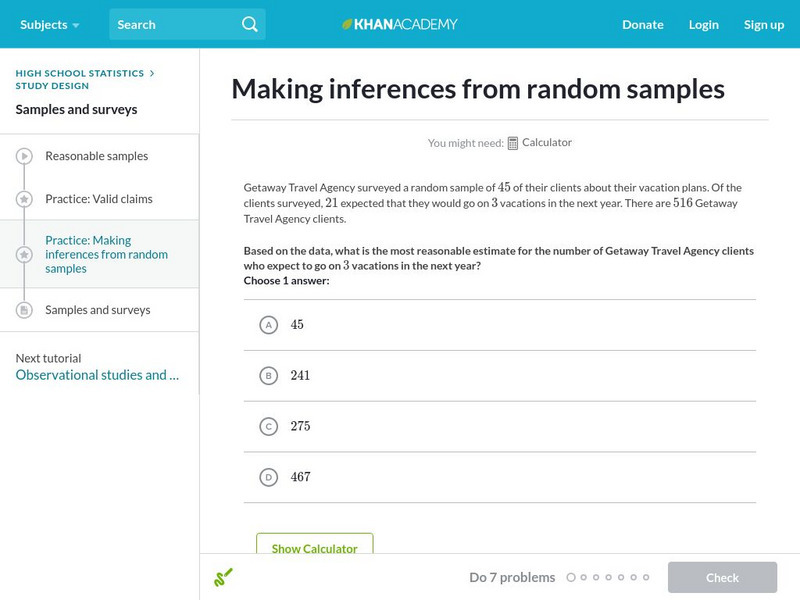


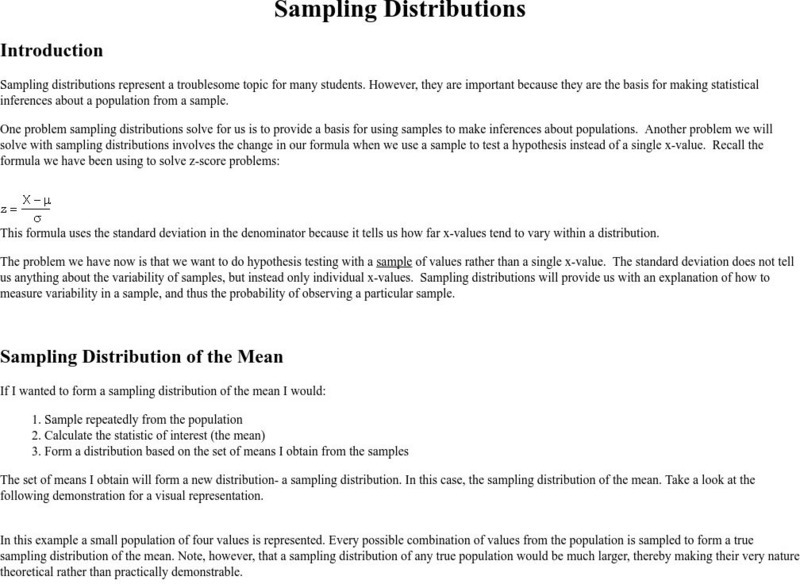
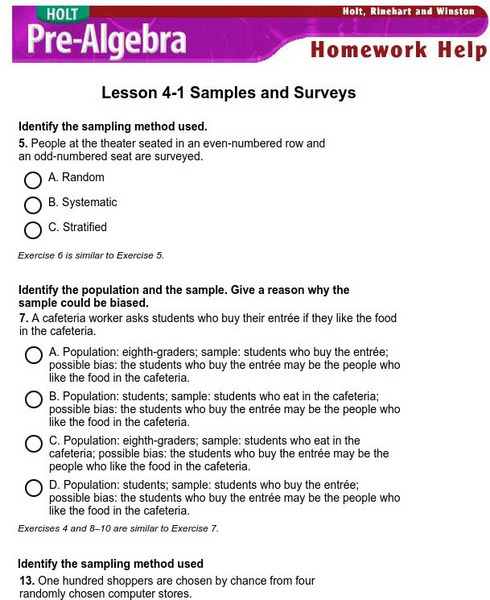
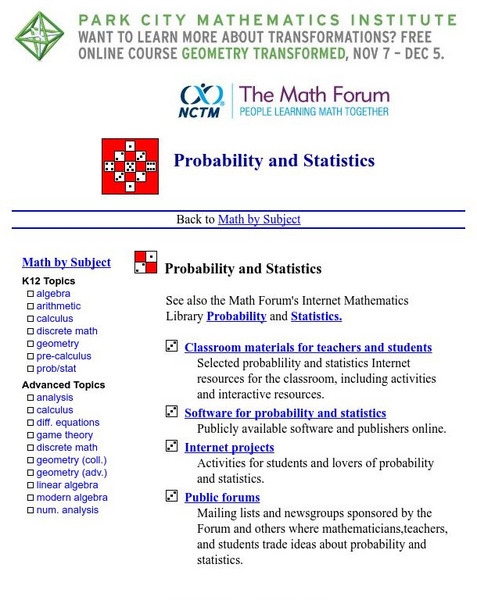
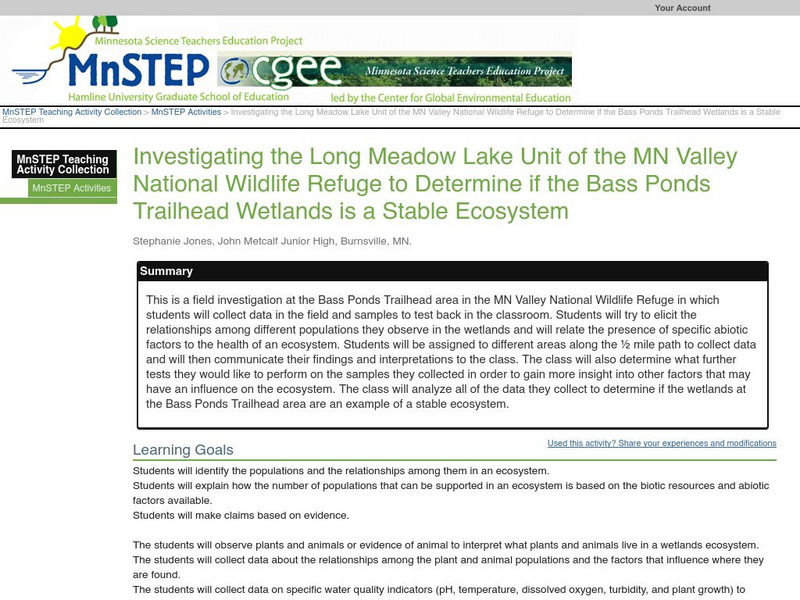


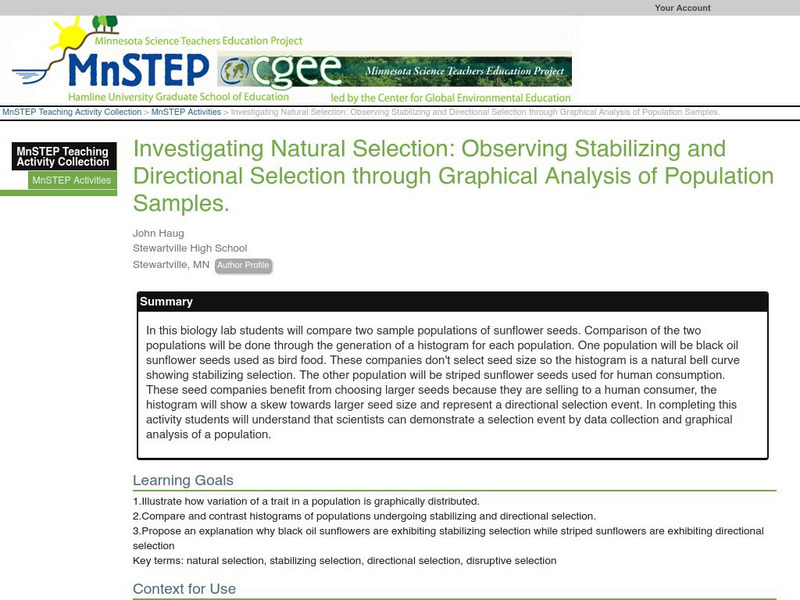
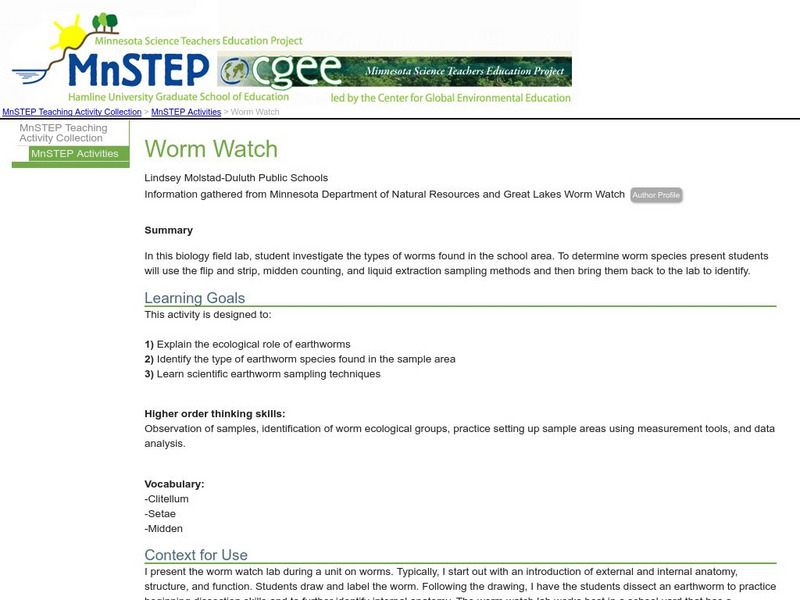
![Statistics Education Web: Bubble Trouble [Pdf] Lesson Plan Statistics Education Web: Bubble Trouble [Pdf] Lesson Plan](https://content.lessonplanet.com/knovation/original/715465-988c4be74f96df36c2d9bcb6f2f5182f.jpg?1661829195)

